Health and Safety Information
Natural Pigments artist materials do not present any major hazard when used with care and common sense. It should, however, be emphasized that, as with other chemical products, high general hygiene standards should be adhered to both during and after using these products, and warnings given on individual products should be followed. Prolonged contact with the skin and ingestion (or swallowing) should be avoided. This includes avoiding practices such as applying paint with the fingers or pointing brushes in the mouth.
Material Safety Data Sheets (MSDS) or Safety Data Sheets (SDS) are documents that describe in detail various data regarding chemical formulations or products upon which occupational and environmental risk assessments are based and include the following:
- Chemical product and company identification
- Composition and information on ingredients
- Hazards identification
- First-aid measures
- Firefighting measures
- Accidental release measures
- Exposure controls—personal protection
- Handling and storage
- Physical and chemical properties
- Stability and reactivity
- Toxicological information
- Ecological information
- Disposal considerations
- Transport information
- Regulatory information
To obtain Safety Data Sheets (SDS), click on the Health and Safety tab on the specific product page. The safety data sheets include all the relevant health and safety information and indicate that our products have been tested to the appropriate standard.
If you search for product information that you cannot find on our website, please contact us.
For more information, please read the following:
• Health Labeling for the United States of America
• Health Labeling for Canada
• Health Labeling for the European Union
• Natural Pigments Products with Hazard Warnings
• Studio Clean-Up and Safe Use Tips
• Tips for Traveling with Artist Oils
Health Labeling for the United States of America
All art materials sold in the United States are required by the Federal Hazardous Substances Act to be labeled whether a health warning is needed or not. The federal Labeling of Hazardous Art Materials Act (LHAMA) became law in November 1990. It governs the labeling of hazardous art materials nationally and is enforced by the Consumer Product Safety Commission (CPSC). The law’s principal intent is to assure that art materials are labeled to warn consumers of potential chronic (long-term/slow-emerging) hazards via a new mandatory ASTM standard.
The ASTM standard D4236 is a standard published by the (non-industry chaired) “artists paints” subcommittee of the American Society for Testing & Materials (ASTM). As the standard itself declares, “Since knowledge about chronic health hazards is incomplete and warnings cannot cover all uses of any product, it is not possible for precautionary labeling to ensure completely safe use of an art product.” “Conforms to D4236” on an art material label does NOT mean the product is “non-toxic.” Rather, it means:
- The material has been evaluated by a toxicologist for acute and chronic toxicity;
- The label names the ingredients identified as presenting a chronic health hazard, if any; and
- A product presenting a chronic health hazard comes with safe use instructions.
The ASTM standard D4236 describes the procedure for creating precautionary labels for art materials to provide chronic health hazards and precautionary statements based on the knowledge that exists in the scientific and medical communities. In a toxicologist’s opinion, these statements concern hazards associated with a product or product component(s) when it is present in a physical form, volume, or concentration that can produce a chronic adverse health effect. This standard applies exclusively to art materials packaged in sizes intended for individual users of any age or those participating in a small group and does not apply to products appropriately labeled for known chronic health hazards. Labels should include the signal word WARNING, a list of potentially chronic hazards, the name of the chronically hazardous component(s), safe handling instructions, a list of sensitizing components, information sources, labeling content, product size, and other supplementary information.
California Propostion 65
Since 2000, many art materials sold in the United States have included additional labeling for products containing cadmium and lead due to California’s Safe Drinking Water and Toxic Enforcement Act of 1986 (commonly known as Proposition 65). California Proposition 65 is an additional labeling precaution commonly found on some hazardous art materials, which is in addition to those facilitated through LHAMA and ASTM D4236. The presence of the “Prop 65” symbol indicates that some specific chemical ingredient within the larger chemical material is known to the state of California to cause cancer, birth defects, or other reproductive harm.
NOTE: There is no direct relationship between the EU and USA systems of health labeling as the categories used to have different levels and limits, e.g., flammable in the USA is not automatically considered as flammable in the EU.
Health Labeling for Canada
Health Canada requires that all artists’ materials containing lead or mercury and sold in Canada should be labeled with the following statement:
DANGER
CONTAINS LEAD / CONTIENT DU PLOMB
DO NOT APPLY TO SURFACES ACCESSIBLE TO CHILDREN OR PREGNANT WOMEN.
NE PAS APPLIQUER SUR UNE SURFACE ACCESSIBLE AUX ENFANTS OU AUX FEMMES ENCEINTES.
Must be used exclusively as material for the purposes of arts, crafts or hobbies, not for use by children. Utiliser uniquement aux fins suivantes comme matériaux pour les besoins d'art, d'artisanat ou passe-temps, pas pour une utilisation par les enfants.
Health Labeling for the European Union
EC directives for health and safety regulations were introduced in the 1980s. They cover all products available to industry or the general public in the European Union (EU). The system’s basis is classifying dangerous substances into one of the following classifications: TOXIC, HARMFUL, CORROSIVE, IRRITANT, OXIDIZING, EXPLOSIVE, FLAMMABLE or DANGEROUS FOR THE ENVIRONMENT.
There can be various levels within a classification, for example, Very Toxic or Extremely Flammable. Most classification levels have accompanying symbols, for example, skull and cross bones for Toxic. In addition, these classifications can be accompanied by “Risk Phrases” or “Safety Phrases.” Any artist’s material, which falls into one of the above classifications, must be labeled accordingly.
The four most common classifications in artists’ materials are Toxic, Harmful, Flammable, and Dangerous for the Environment, as follows:
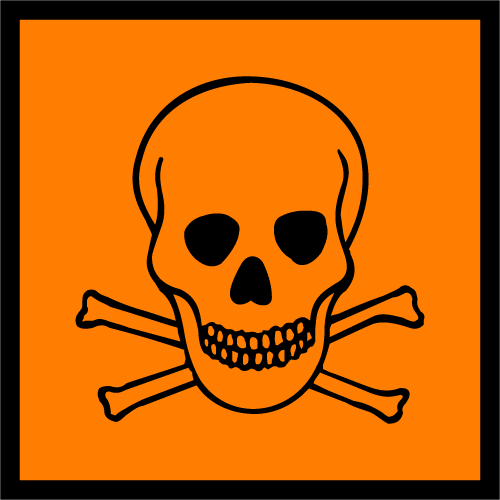 | 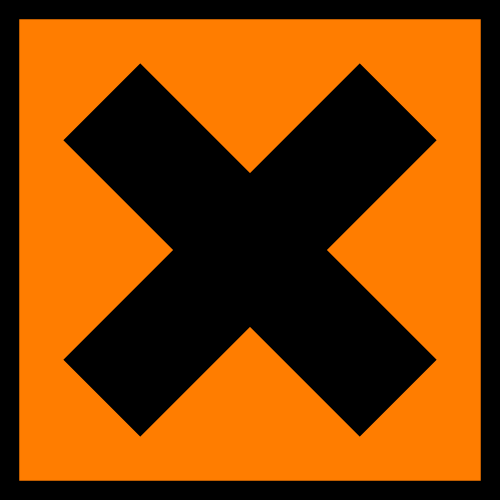 | 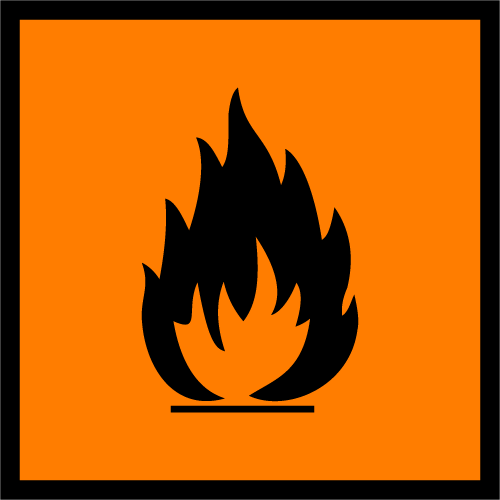 |  |
| Toxic Symbol | Harmful Symbol | Highly Flammable Symbol | Dangerous for the Environment Symbol |
The risk or safety phrases will vary according to each product.
For an example of the labeling required with each classification above, Dammar Varnish would be labeled with Harmful and Dangerous for the Environment and with the following risk phrases:
• Flammable
• Harmful by inhalation, in contact with skin, and if swallowed
• Irritating to the eyes and skin
• May cause sensitization by skin contact
• Toxic to aquatic organisms, may cause long-term adverse effects in the aquatic environment
• May cause lung damage if swallowed
And with the following safety phrases:
• Keep out of reach of children
• Wear suitable protective clothing and gloves
• Avoid release into the environment. Refer to safety data sheets
• If swallowed, do not induce vomiting: seek medical advice immediately and show this container or label
From 2015 all chemicals and mixtures will need to be labeled with new symbols and ‘hazard’ and ‘precautionary’ phrases. The requirement for this change came into force in 2010 for substances (e.g., turpentine) and will change for all products by December 2015.
The symbols for toxic, harmful, highly flammable, and dangerous for the environment, as illustrated above, will change to:
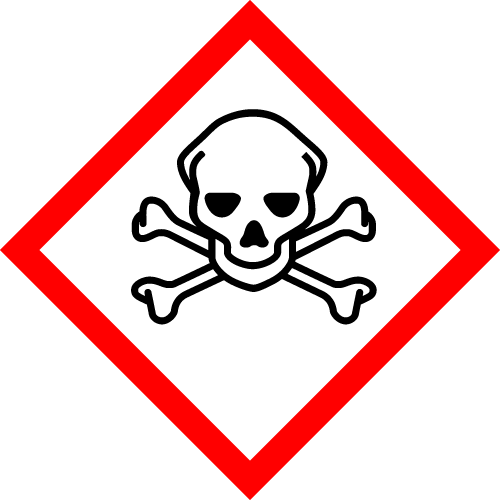 | 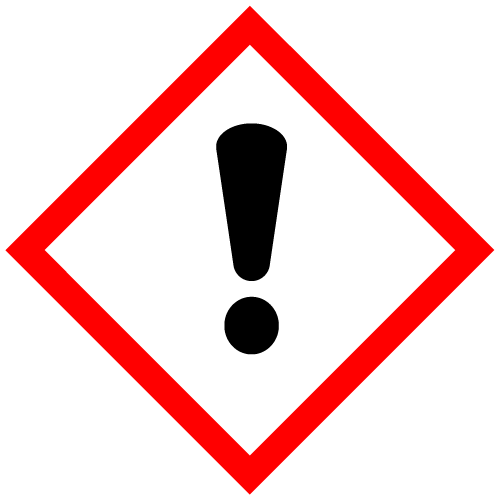 | 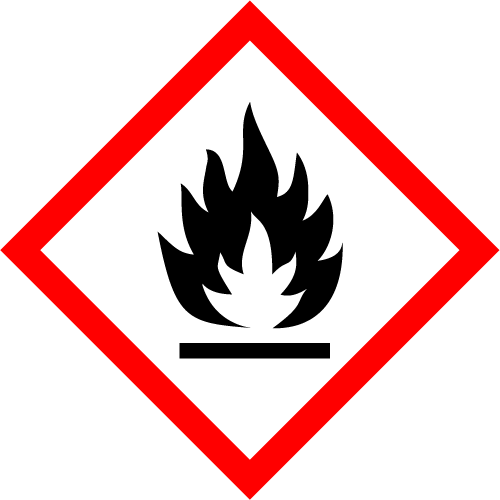 | 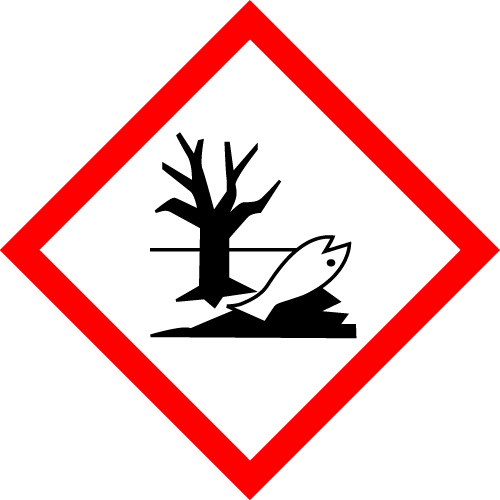 |
| Toxic Symbol | Harmful Symbol | Highly Flammable Symbol | Dangerous for the Environment Symbol |
|
|
|
|
A product that is not labeled with a hazard warning is considered non-dangerous.
Natural Pigments Products with Hazard Warnings
Those containing solvents:
• Rublev Colours Mineral Spirit (Stoddard Solvent)
• Rublev Colours Rublesol OMS
• Rublev Colours Gum Turpentine
• Rublev Colours Dammar Varnish
• Rublev Colours Japan Gold Size
• Rublev Colours Gloss Varnish
• Rublev Colours Matt Varnish
• Rublev Colours Satin Varnish
• Rublev Colours Picture Varnish
• Rublev Colours Retouching Varnish
• Rublev Colours Conservar Varnish
Those containing lead carbonate:
• Rublev Colours Artist Oil Lead White No. 1
• Rublev Colours Artist Oil Lead White No. 2
• Rublev Colours Artist Oil Ceruse
• Rublev Colours Artist Oil Venetian White
• Rublev Colours Artist Oil Crystal White
• Rublev Colours Artist Oil Mica Lead White
• Rublev Colours Lead Oil Ground
• Rublev Colours Lead Oil Paste Ground
Those containing lead chromate/lead sulfate:
• Rublev Colours Artist Oil Chrome Green
• Rublev Colours Artist Oil Cinnabar Green
• Rublev Colours Artist Oil Chrome Yellow Primrose
• Rublev Colours Artist Oil Chrome Yellow Light
• Rublev Colours Artist Oil Chrome Yellow Medium
• Rublev Colours Artist Oil Chrome Ocher
• Rublev Colours Artist Oil Flemish White
Those containing zinc oxide:
• Rublev Colours Watercolor Zinc White
Natural Pigments products with Hazard Warnings
• All products containing cadmium
• Products containing solvents—See above
• Products containing lead—See above
• Products containing soluble cobalt
• Products containing certain pigments and mediums labeled for California Proposition 65
Studio Clean Up and Safe Use Tips
Good working practice should be adopted with all artists’ materials, whether potentially hazardous or not. Before you start, read the product labels.
Within your studio:
• Ensure plenty of fresh air, ventilation, and circulation.
• Do not sleep in your studio without removing painting materials elsewhere; in particular, dispose of unused solvents and dirty rags in fireproof and solvent-proof containers.
• Store all materials, particularly solvents, tightly capped when not used.
• Do not expose artists’ materials to flames or excessive heat sources.
While working:
• Do not eat, drink or smoke when working due to the risk of ingestion (swallowing).
• Avoid excessive skin contact, particularly with solvents.
• Do not point your brushes in your mouth; paints are not made for human consumption.
• Refrain from applying color directly with your fingers.
• Use a barrier cream, like Rublev Colours Skinguard, or gloves when painting with your hands.
• When airbrushing, wear a NIOSH-approved mask and work in adequate ventilation to avoid inhalation of airborne particles. An exterior vented extraction system is recommended.
• When using powdered pigment, wear a NIOSH-approved mask and work in adequate ventilation to avoid inhalation of airborne particles. An exterior vented extraction system is recommended.
• Do not pour out more solvent than is necessary for your current painting session; it will only evaporate into the room.
• If paint or solvent is splashed into the eyes or skin, wash thoroughly with water.
• Avoid prolonged inhalation of solvent vapors.
• Clean up all spills.
• Keep artists’ materials out of reach of children, animals, and foodstuffs.
(NOTE: Natural Pigments artists’ materials are manufactured for use by adults, that is, persons over the age of 18. Small children are exposed to more significant risks than adults due to their smaller body size and lower weight. Artists’ materials should be kept out of children’s reach to prevent accidents.)
After painting:
• Clear away all solvent and paint-soaked rags and discarded palettes. Dispose of them in an airtight, solvent-proof container or an appropriate manner.
• Wash hands thoroughly at the end of your painting session.
• Do not use excess solvent to wash color from your hands.
• Use a hand cleanser, like Rublev Colours Handgel.
Tips for Traveling With Artist Oils
All of our oil color products are suitable for outdoor use.
You want to be able to travel with your paint box for Plein air painting or while away on vacation, so you need to know if you can take them with you when traveling by air.
Because of airline safety regulations, we offer the following information regarding our color products. Any product or material with a flash point below 60° Celsius (140 °F) is classified as dangerous goods, and those products cannot be included during airline travel.
(NOTE: The flash point is the temperature at which a product will flame; therefore, a higher flash point is better.)
While a few of our products have a flash point at or below 60° Celsius (140 °F), the flash points of many of our oil color products are well above. Below is a comprehensive list that can be used (and shown to an airline official, if needed) to verify whether or not a product may be considered allowable for airline transport.
Products with flash points below 60° Celsius (140 °F) that are considered Group II or Group III flammable materials should be considered unsuitable for airline travel:
• Rublev Colours solvents
• Rublev Colours Artist Oil Mediums
• Rublev Colours Conservar varnishes
• All aerosols
Natural Pigments products with flash points above 60° Celsius (140 °F), and which are therefore classified as non-hazardous*:
Flashpoint (closed cup):
• Rublev Colours Artist Oils >230° C
• Refined Linseed Oil >230° C
• Linseed Stand Oil >230° C
• Thickened Linseed Oil >230° C
• Bleached Linseed Oil >230° C
• Cold-Pressed Linseed Oil >230° C
All water-based products, such as Rublev Colours Watercolors and Ceracolors, are unrestricted for air transportation.
*We suggest that you consult with your airline before taking these products on the airlines. Our experience is that some airlines will adopt local rules beyond the scope of IATA, prohibiting some of the above product categories.
Artist paints that are nonflammable are not regulated by the Federal Aviation Administration (FAA) and may be carried in carry-on or checked baggage. At the TSA security checkpoint, liquids, pastes, and gels in carry-on baggage are further limited to 100ml (3.4 oz) containers.
For transportation purposes, “nonflammable” paints are those with a flashpoint above 140° F (60° C). The flashpoint is listed on a product’s material safety data sheet (MSDS). Section 14 of the MSDS will also indicate if the product is regulated for transportation.
Some artist paints, such as alkyl gels, polyurethanes, and varnishes, can be flammable (flashpoint at or below 140° F [60° C]). Flammable paint products may not be carried in carry-on or checked baggage. Paint thinners, turpentine, and brush cleaners are flammable liquids and may not be carried in carry-on or checked baggage. Aerosols paint products use a flammable propellant and may not be carried in carry-on or checked baggage.
For more details, please consult the Pack Safe page of the Federal Aviation Administration website.
When traveling with Rublev Colours Artist Oils, you may enclose our statement with your paints in your checked baggage. Download the Natural Pigments travel letter.
